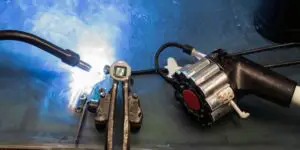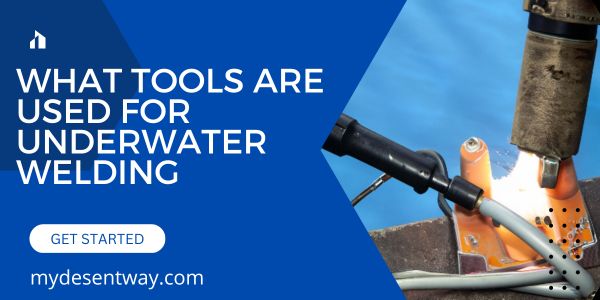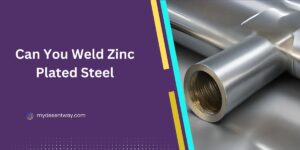Table of Contents
- What Tools Are Used for Underwater Welding
- The Importance of Underwater Welding
- Types of Underwater Welding
- Essential Tools for Underwater Welding
- 2. Welding Equipment
- Safety Measures
- Underwater Welding Techniques
- 2. Flux-Cored Arc Welding (FCAW)
- Challenges of Underwater Welding
- Qualifications and Training
- Career Opportunities
- Environmental Impact
- Recent Technological Advancements
- Case Studies
- What Tools Does an Underwater Welder Use?
- What Do You Need for Underwater Welding?
- What Welder is Used for Underwater Welding?
- What Do Underwater Welders Stay In?
- Underwater Welding Equipment Price
- Conclusion
- FAQs
In the depths of our oceans, where silence reigns and pressure surmounts, a remarkable and vital profession thrives – underwater welding. This unique trade requires a combination of skill, courage, and specialized tools to mend and create structures beneath the water’s surface. In this comprehensive guide, we will dive into the world of underwater welding, exploring the tools and techniques that make this remarkable feat possible.
What Tools Are Used for Underwater Welding
The tools used for underwater welding include welding electrodes, diving equipment, welding machines, cleaning tools, and inspection equipment.
The Importance of Underwater Welding
Underwater welding plays a crucial role in maintaining and repairing submerged structures such as bridges, pipelines, and offshore oil platforms. It ensures the integrity and safety of these vital infrastructures.

Types of Underwater Welding
1. Wet Welding
Wet welding, also known as “open water welding,” is performed directly in the aquatic environment. It is the most common method used for underwater repairs due to its versatility.
2. Dry Welding
Dry welding takes place in enclosed, pressurized chambers known as dry habitats. This method is used for more complex and large-scale projects where environmental factors need to be controlled.
3. Hyperbaric Welding
Hyperbaric welding is a specialized technique used at extreme depths. It involves a hyperbaric chamber that allows welders to work in highly pressurized conditions.
Essential Tools for Underwater Welding
1. Diving Equipment
Diving suits, helmets, and breathing apparatus are essential for the safety and comfort of underwater welders. These tools enable them to work effectively in challenging conditions.
2. Welding Equipment
Specialized welding equipment, including electrodes, power sources, and shielding gases, is crucial for achieving strong and durable welds underwater.
Safety Measures
Safety is paramount in underwater welding. Strict protocols and procedures are followed to minimize risks associated with underwater welding, including electric shock and decompression sickness.
Underwater Welding Techniques
1. Shielded Metal Arc Welding (SMAW)
SMAW, also known as stick welding, is a versatile method suitable for various underwater welding tasks. It involves a coated electrode and a power source.
2. Flux-Cored Arc Welding (FCAW)
FCAW is a semi-automatic welding process that uses a continuous wire feed and a flux-cored electrode. It is often preferred for welding in difficult conditions.
3. Gas Tungsten Arc Welding (GTAW)
GTAW, or TIG welding, is a precise welding technique that uses a non-consumable tungsten electrode and an inert gas shield. It produces high-quality welds.
Challenges of Underwater Welding
Working underwater presents numerous challenges, including limited visibility, extreme pressure, and the need for meticulous planning to ensure successful outcomes.
Qualifications and Training
Becoming an underwater welder requires rigorous training and certification. Prospective welders must meet specific criteria and undergo specialized courses.
Career Opportunities
Underwater welding offers a unique and rewarding career path. Welders can find employment in various sectors, including offshore construction, ship maintenance, and underwater archaeology.
Environmental Impact
Underwater welding operations must adhere to strict environmental regulations to minimize their impact on marine ecosystems and underwater habitats.
Recent Technological Advancements
Advancements in technology, such as remotely operated underwater vehicles (ROVs) and automated welding systems, have revolutionized the field of underwater welding.
Case Studies
Explore real-life examples of underwater welding projects and their significance in maintaining critical infrastructure.
What Tools Does an Underwater Welder Use?
Underwater welders rely on a range of specialized tools to perform their tasks effectively:
- Diving Gear: To reach the underwater work site, divers wear drysuits, wetsuits, or diving helmets equipped with communication systems to stay connected with the surface.
- Welding Electrodes: Underwater welders use specially designed consumable electrodes, often made of coated steel, for welding purposes. These electrodes are essential for creating strong and durable underwater welds.
- Welding Machine: The primary tool for underwater welding is the underwater welding machine, also known as a hyperbaric welding chamber. This machine protects the welder from the underwater environment and provides a controlled atmosphere for welding.
- Cutting Equipment: Sometimes, underwater welders need to cut through metal structures. They use cutting tools such as hydraulic torches and plasma arc cutters to perform precision cuts underwater.
What Do You Need for Underwater Welding?
Underwater welding is a complex and demanding task, and welders require specific qualifications and equipment to perform it safely:
- Diving Certification: Before becoming an underwater welder, individuals need to obtain commercial diving certification, which includes training in diving techniques and underwater welding skills.
- Welding Certification: Underwater welders should also have welding certification, such as AWS D3.6 Class B or Class A certification, to demonstrate their proficiency in welding underwater.
- Safety Equipment: Safety is paramount in underwater welding. Besides diving gear, welders must have safety equipment, including harnesses, flotation devices, and emergency air supplies.
What Welder is Used for Underwater Welding?
Underwater welding is typically performed using two primary methods:
- Wet Welding: In wet welding, the welding is conducted directly in the water, and the diver-welder uses shielded metal arc welding (SMAW) or manual metal arc welding (MMAW) equipment. Wet welding is suitable for shallow water or quick repairs but poses some challenges due to water contamination and lack of controlled conditions.
- Dry Welding: Dry welding, on the other hand, is carried out inside a hyperbaric chamber filled with a controlled atmosphere, which allows for high-quality welds even at greater depths. Dry welding uses equipment specifically designed for underwater conditions and ensures a safer and more controlled environment.
What Do Underwater Welders Stay In?
Underwater welders typically stay in accommodations known as diving bells or living quarters. These structures are equipped with all the necessary amenities, including sleeping quarters, cooking facilities, and sanitary facilities. Diving bells are pressurized to match the depth of the dive site and allow divers to acclimate to the pressure changes safely.
Underwater Welding Equipment Price
The cost of underwater welding equipment varies depending on several factors, including the type of welding method, the depth of the dive, and the specific equipment required. Wet welding equipment is generally less expensive, with costs ranging from a few thousand dollars to tens of thousands. In contrast, dry welding equipment, including hyperbaric chambers, can be significantly more expensive, often exceeding six figures.
Conclusion
In conclusion, underwater welding is a remarkable profession that combines the skills of welding and diving to maintain and repair underwater structures. It is a challenging yet rewarding career choice that plays a vital role in ensuring the safety and integrity of submerged infrastructures.
FAQs
- Is underwater welding a dangerous profession?
While it comes with inherent risks, rigorous training and adherence to safety protocols minimize the dangers associated with underwater welding.
- What are the prerequisites for becoming an underwater welder?
– Prospective underwater welders need to undergo specialized training, obtain certification, and meet certain physical and medical requirements.
- How deep can underwater welders work?
The depth at which underwater welders can work depends on their training, equipment, and the specific requirements of the job. Some welders can work at extreme depths with the use of hyperbaric chambers.
- Are there any environmental concerns related to underwater welding?
Yes, environmental regulations are in place to ensure that underwater welding operations minimize their impact on marine ecosystems.
- What are the future prospects for underwater welding?
With ongoing technological advancements and the need for maintaining underwater infrastructure, the future prospects for underwater welders remain promising.
In this comprehensive guide, we’ve delved into the fascinating world of underwater welding, exploring the tools, techniques, and importance of this unique profession. Whether you’re considering a career in underwater welding or simply intrigued by the intricacies of this field, we hope this article has provided valuable insights.











whoah this blog is great i love studying your posts. Stay up the good work! You recognize, a lot of individuals are searching around for this information, you could help them greatly.